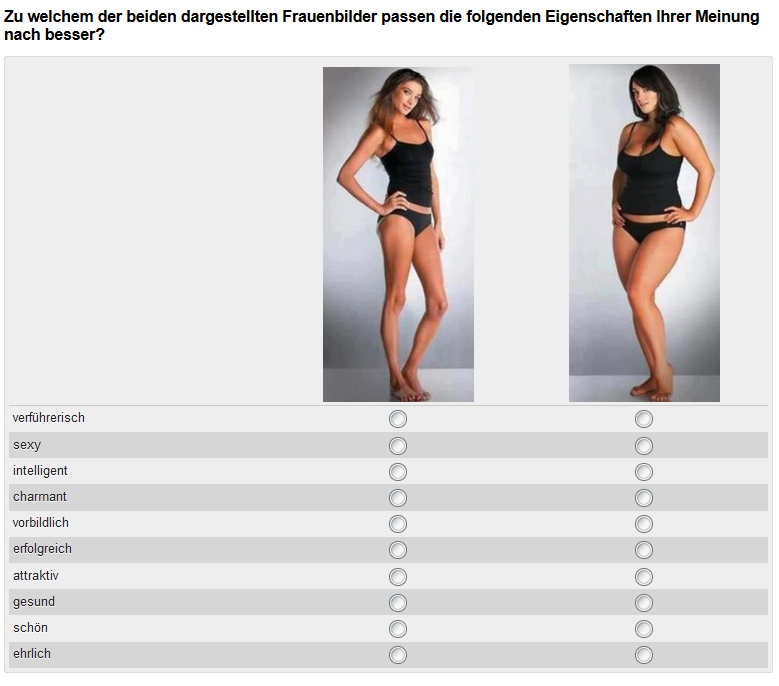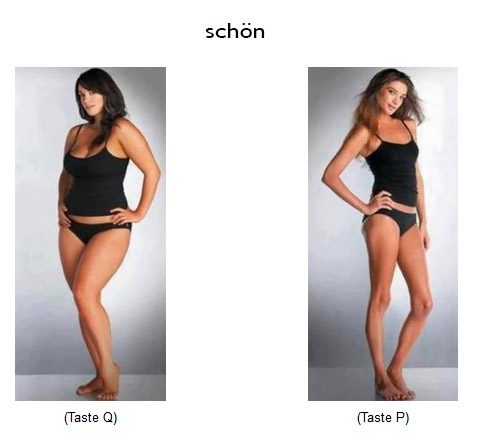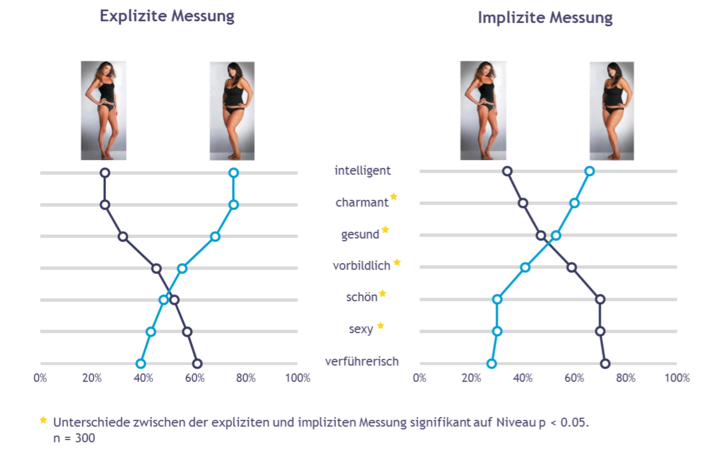Mostly, explicit measurement methods are used in market research, for example to measure opinion and attitude towards a product or brand. However, considered, conscious answers about one’s own attitude are often distorted by social desirability and prevailing social norms. Implicit measurement methods minimise these effects by requiring a respondent to give his or her evaluation spontaneously, leaving him or her no time to consider whether his or her statement is socially conforming or not.
The aim of the present study is to examine whether the results of explicit and implicit measurement procedures differ. The topic of the study is the ideal of beauty today. This topic lends itself very well to such a comparison of methods, since social norms, current trends and the media have a great influence in this area. Each of us has a certain preferred ideal, we do not think about it, it forms unconsciously, but it is also subject to change. Depending on this ideal of beauty, we find a person beautiful and likeable and also make certain demands on ourselves.
For a long time, the beauty ideal of a slim woman has prevailed in public, keyword “Size Zero”, which has driven many women to anorexia. Nowadays, we can observe how the media and advertising agencies are steering away from this ideal of beauty towards a “normal” image of women. We are consciously aware of this trend, it is slowly becoming the social norm. But how do social norms influence our firmly anchored subconscious ideas about the perfect female figure? Do we also emotionally find a fuller woman more beautiful than a slimmer one? It is precisely with questions like these that the method of implicit measurement yields valid results.
 Deutsch
Deutsch
 English
English
 Français
Français





